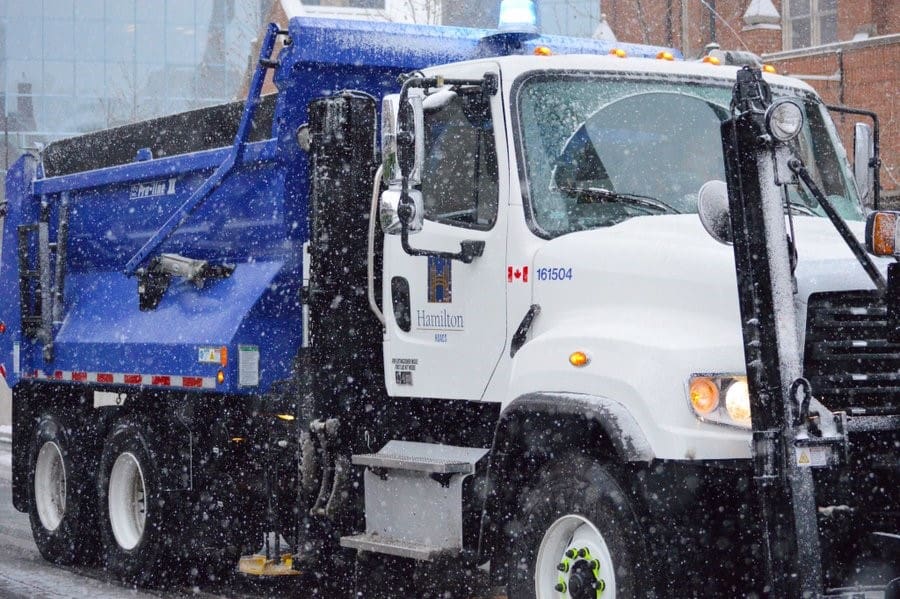Hamilton offers snow clearing tips, Plow Tracker map as winter makes its arrival
Published November 28, 2023 at 3:31 pm

The first snowfall of the year means the first snow plow day of the season as well and the City of Hamilton has a few tips on how you, the snow plows and Mother Nature can all get along this winter.
Hamilton Roads are plowed based on a priority system, so if you’re wondering why your street hasn’t been plowed yet, don’t worry. The plows will get there eventually. The first priority is main routes and escarpment crossings. The second priority is collector roads and third is neighbourhood streets.
TIPS FOR SNOW/ICE CLEARING
- When clearing your driveway, consider the direction the plow is going. Move snow to the side of your property that the plow finishes on so less snow will be spread back across the driveway.
- Do not blow or place snow onto the roadway. Blow or place snow onto the boulevard or your own front/ side yard.
- Keep children off snow banks to prevent them from slipping into the path of vehicles and equipment. Do not let children tunnel into snow banks. The snow can collapse or be pushed back by snow plows.
- Keep your vehicles off the road during and immediately following a snowfall. This ensures thorough ploughing of roadways and prevents your vehicle from being plowed in.
Winter maintenance vehicles are dispatched prior to the start of a snowfall to apply an anti-icing treatment if required and plows and salters will then work continuously applying salt, sand or anti-icing as required.
Just like with plowing, roads with the greatest volume of traffic called primary roads, and Escarpment Accesses, are salted or sanded first. Secondary roads that lead to primary roads are salted or sanded next, followed by residential streets, which generally receive sand/salt treatment at intersections, hills and sharp curves.
Road salt is the conventional de-icing/anti-icing chemical for maintaining winter safety because of its cost, effectiveness and ease of handling. However, when used excessively, it’s considered harmful to the local environment and poses a risk to plants, animals, lake and stream ecosystems and groundwater.
To ensure Hamilton continuously improves and manages the amount of salt used in its winter maintenance operations, the City has released its 2021 Salt Management Plan that sets out a policy and procedural framework for salt usage. The plan will allow the City to phase in and test new approaches and technologies in a way that is responsive to fiscal demands, considers environmental impacts through prudent salt use and ensures that roadway safety is not compromised.

Residents can also protect the environment by using less salt with these tips:
- Before snow is expected to fall or the temperature is expected to drop below freezing, spread a small amount of salt on your driveway and walkways to help stop ice and snow from sticking to the surface.
- To reduce the likelihood of needing salt, clear snow and ice from your driveway and walkways as soon as possible – this helps reduce ice build-up.
- After a snowfall, use salt sparingly in the required areas needed to ensure safety and ensure all snow has been cleared first.
- Salt is less effective at temperatures below -10 degrees. Residents should consider alternative materials like sand, grit, non-clumping kitty litter or magnesium chloride.
The City of Hamilton’s Plow Tracker map allows residents to see where the maintenance vehicles have been in the last two, four, 12 and 24 hours.
(These vehicles are not only used for winter activities but also used for general maintenance programs. The tracking tool monitors the travels of the vehicle regardless of activity performed.)
Residents can learn more about the Plow Tracker at (905) 546-2489.
Looking for Sidewalk Snow Plowing? Learn more here.






